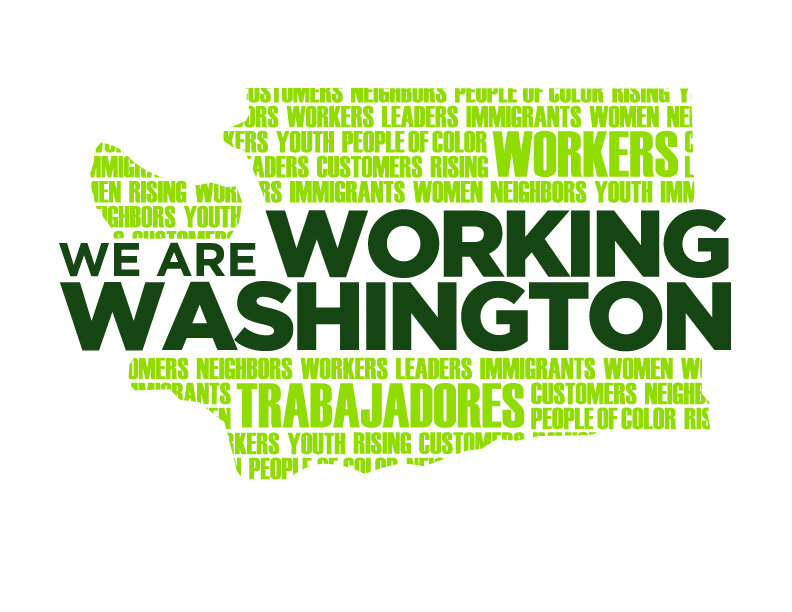Trump overtime rule fails to restore protections to millions of overworked & underpaid salaried workers
Salaried workers put in an average of 49 hours a week — but don’t get overtime pay when they work overtime hours
The Trump administration announced plans today to update the salary threshold for overtime exemption to a paltry $35,000/year— about 2.3 times what a full-time worker paid the federal minimum wage would make per year.
“If the minimum wage is the minimum a worker has to be paid for an hour's work, then the overtime threshold is the minimum a worker has to be paid in order to work endless hours without additional pay,” explained Rachel Lauter, Executive Director of Working Washington, which has been leading the right to restore overtime rights in Washington state. “And a salary of $35,000 isn’t nearly enough money to be working for free.”
But that’s quite literally what the salary threshold for overtime exemption means — it’s the minimum amount an employer can pay an employee in order to be able to classify them as salaried, make them overtime-exempt, and require them to work limitless overtime hours with no additional overtime pay. (Technically, a position has to also satisfy the so-called “duties test” to be overtime-exempt, but the duties test is difficult to enforce outside of a court process; in most workers’ experience, they are overtime-exempt simply because their employer decided to classify them that way.)
The average salaried worker puts in 49 hours a week and doesn’t get paid an additional dime of overtime pay when they work overtime hours — but most salaried workers at food, retail, office, nonprofits, and other jobs aren’t looking for hundreds of hours of overtime pay. They’re simply looking to have their time back so they can be with their families, contribute to their communities, get some rest, and just live their lives. But they also know that the only way to get employers to respect their time is if they have to pay for it.
The Trump administration’s new overtime rule has failed to do what’s necessary to restore overtime rights to salaried workers and bring back the 40-hour workweek. Washington state’s Department of Labor & Industries will get a chance to step up next — the state is expected to release a draft state rule in the next month or so after a year-long rulemaking process. They have indicated they will phase-in an increase in the state threshold to somewhere between 2 times the state minimum wage (about $56,000/year in 2020) and 2.5 times the state minimum wage (about $70,000/year).
More information:
How the numbers compare:
From the initial adoption of the federal minimum wage in the 1930s through the mid-1970s, the salary threshold for overtime exemption was typically set at or above 3x the minimum wage. It has only been updated once in the past four decades.
The $35,000 Trump figure announced today is about 2.3x what a full-time worker paid the federal minimum wage would make per year. This is similar to the level set when the federal standard was last raised during the George W Bush administration to about $24,000/year, or 2.2x the then-federal minimum wage of $5.15/hour.
The Obama administration in 2016 released a rule which would have raised the overtime exemption threshold to $47,476, or about 3.1x the federal minimum wage. That rule was blocked by a judge in Texas and then the Trump administration abandoned the appeals process.
In the mid-1970s, about 60% of salaried workers got overtime pay when they worked overtime. Now less than 10% do — and it's not because we're working less.
The average salaried workers reports putting in 49 hours a week; 25% of salaried workers report 60-hour workweeks. (Source: Gallup)
The Washington state Department of Labor & Industries has been engaged in a rulemaking process to restore overtime rights for nearly a year.
First-person accounts about pay, time, and overtime are available on our website.

